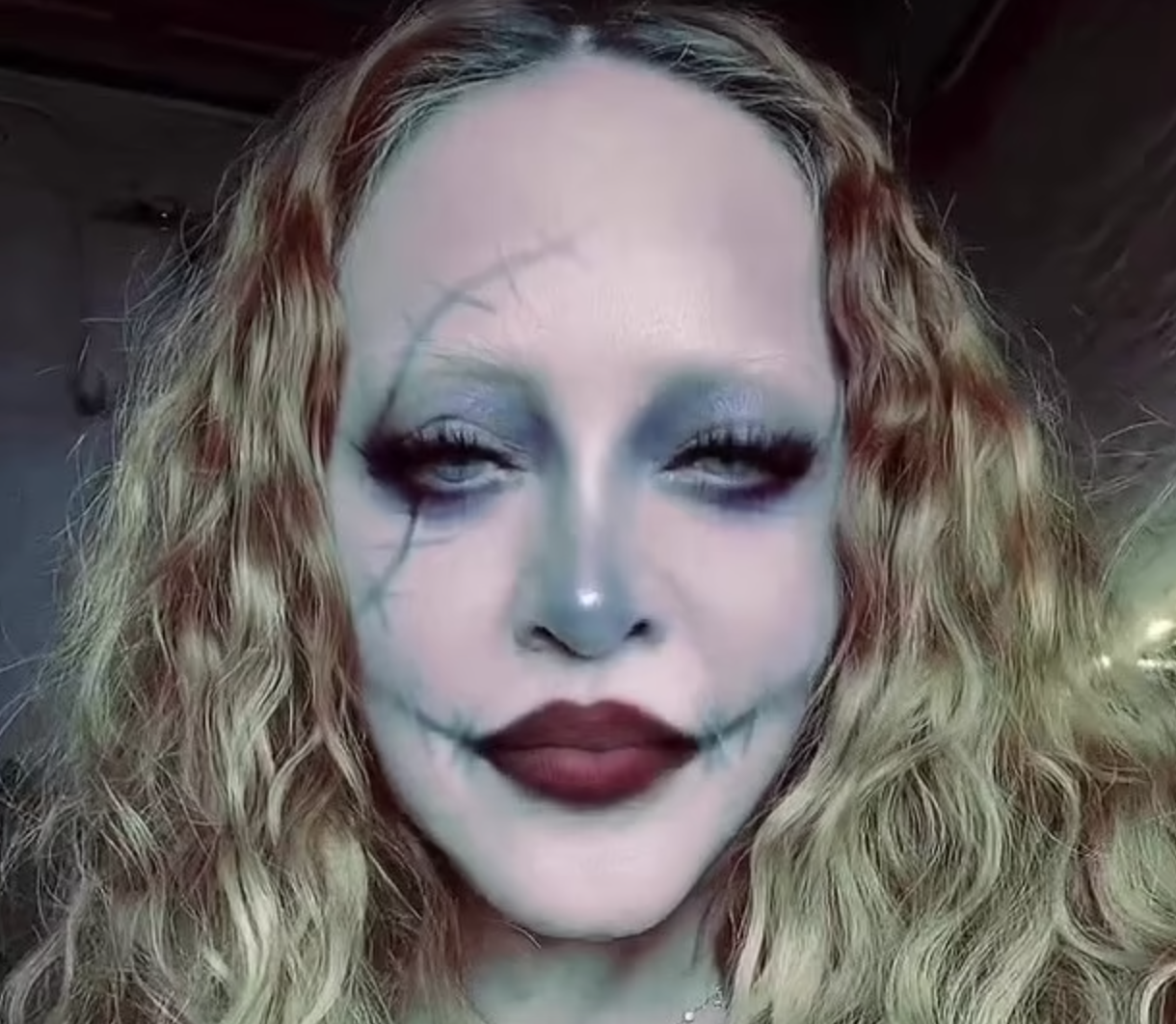Just when you thought Madonna might not have any sense of self-awareness, she goes and does something all too meta: puts scar makeup all over her face as part of her Halloween costume. It’s unclear just what, exactly, she was trying to “be” with this look, apart from Someone Who Just Left the Plastic Surgeon’s Office. Unless, of course, she wants to say she’s going for a “scarecrow” aesthetic (some ageist areseholes would jibe, “Ha! More like scarecrone!”). Others have posited she was trying her hand at being a “sexy zombie.” In any event, maybe she actually didn’t know that putting scars on her visage like that would draw the obvious remark from viewers that it looks as though she just got another touch-up at the clinic and didn’t bother to wait to show it off “casually,” better known as: acting like it never happened at all.
Although making comments about people’s plastic surgery can be construed as a form of body shaming, the glaring spotlight on Madonna’s various procedures over the past decade has become difficult to ignore. Even in spite of the many filters (also used in her “Scarface” video) she freely wields to make her face look somehow younger than it did when she was in her twenties (this being called “Madonna’s Face as Andy Warhol’s Philosophy”). And while some would say that her inability to “admit” her age by just “letting herself go” is part of the problem in terms of why women continue to remain obsessed with looking young by any means necessary (read: plastic surgery), what it really speaks to is the future of what “looking young at any age” will mean.
Many will already take note that, since even as recent a time as a show like Golden Girls, when Bea Arthur was sixty-three playing a woman in her fifties, those in the same age bracket now presently look much younger. While certain researchers tend to offer the idea that, for women, this has become a phenomenon because more females are having children later in life or not at all—which means the youth and beauty sucked from them while nurturing that child in their womb is bypassed—a key factor is the more widespread ability of various beauty “procedures” and products. Especially expensive ones that only celebrities like Madonna can afford.
Granted, Madonna likely wishes she hadn’t “needed” to start in the plastic surgery game until after the 90s, when even more modern advancements came along. Perhaps she would have preferred to wait for something less “invasive” like the vampire facial Kim Kardashian made notorious. Alas, Madonna received the pratfalls of being a baby boomer just as she received many of its benefits (e.g., the ease of climbing to the top without every pre-fame move being documented or, say, being positioned at a time in history when she could lay claim to doing everything “first”). And one of those cons, as it were, included subjecting herself to more “analog” beauty methods. Starting too soon, yet still seeking out nothing but the best money could buy (much like Elise Elliot [Goldie Hawn] in The First Wives Club, who famously stated, “It’s the 90s, plastic surgery is like good grooming”).
And it served her well for quite a while, save for a strange awkward phase in 2001 (for the entirety of the Drowned World Tour) that magically disappeared in 2002. As though she’d “switched surgeons” or something. In any event, Madonna’s ever-changing face has long been a topic of discussion, often heated. Indeed, M was perhaps more called out than ever when she graced the cover of New York Magazine in 2008 with “The New New Face” as an accompanying title meant to refer to a plastic surgery procedure that was all the rage among celebrities at the time. But by and large, the discussion about her face is rather minimal considering how overt the changes to it have been. Maybe that’s just another aspect of being in the upper echelon financially: no one questions what you do to your body that much for fear of getting slapped on the wrist in some unexpected way. In Britney Spears’ case, that partially resulted in an all-out revolt against recording new music.
While non-famous women have the advantage of looking younger for longer compared to their forebears thanks to a vastly increased quality of life (complete with regular dental care!), the fact remains that it is only celebrities and other assorted richies who will be able to truly buy their way out of the effects of time (and who knows, maybe even death at some point). Madonna might not be deemed the best example of this, but then, one can dredge up the insult-compliment, “You have to admit that she looks great…for her age.” And she certainly doesn’t look like Bea Arthur did in her sixties.























[…] Genna Rivieccio Source link […]